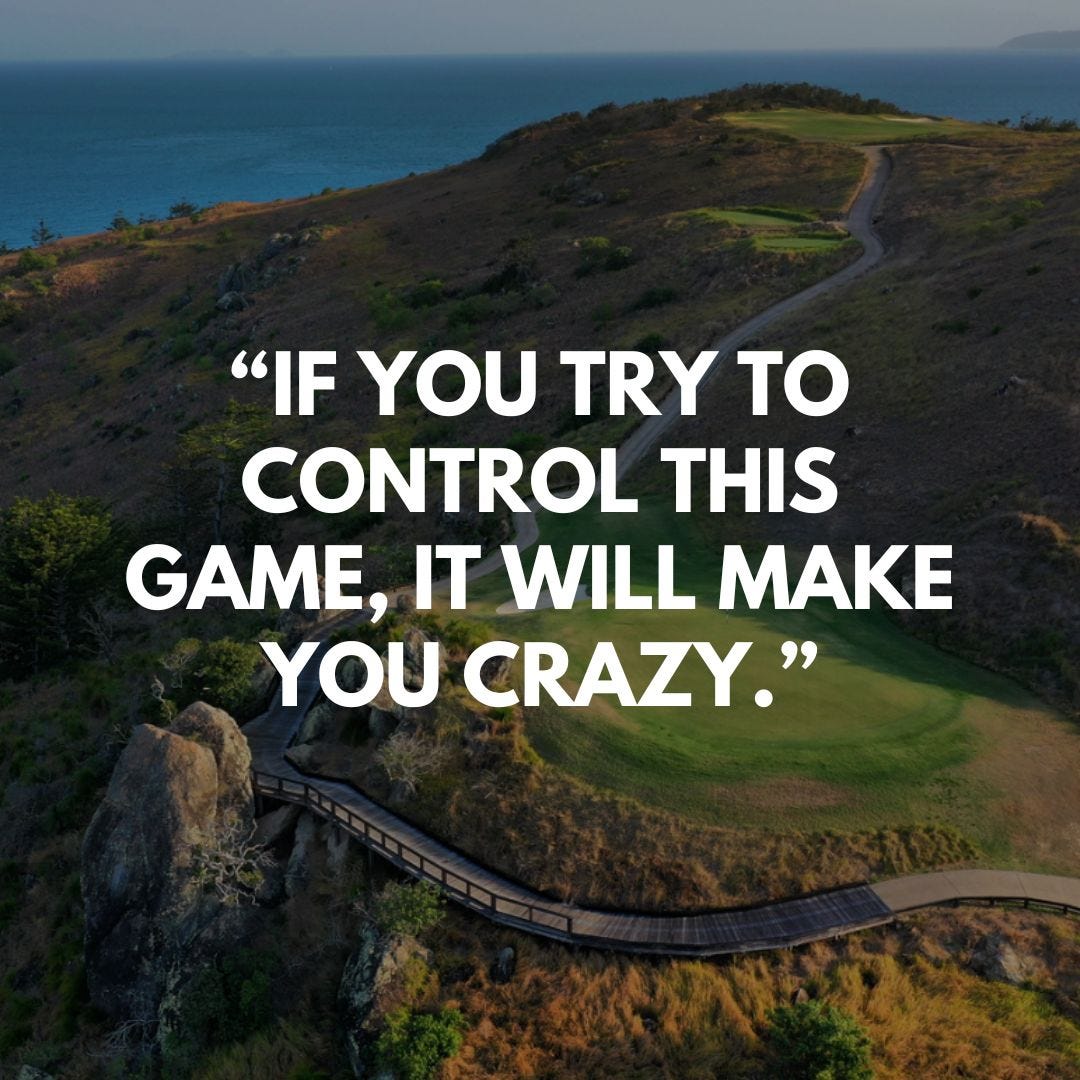The Golf Book Club: Every day, we share a mental game lesson inspired by great golf books—stories and strategies to help you think better so you can play better.
The authors went back to sports psychologist Dr. Deborah Graham to learn more about routines.
First, we have to understand how golf really works.
Dr. Graham points to the movie Apollo 13. The astronauts are stranded in space. There’s no gravity, so they’re trying to collect all these pieces of equipment floating around them. But every time they get close, a piece slips away.
Dr. Graham says, “That’s the way it is with golf. You can’t get all the mechanics in place and keep them there. If you try to control this game, it will make you crazy.”
The solution is a consistent routine.
So let’s look at two different types of routines and see what might work best for you.
Commitment to your full routine.
Billy Casper was so humble, we sometimes forget how good he was.
The foundation of his success was a consistent pre-shot routine. He’d stand behind the ball, evaluate the shot, make a decision, pull the club, set up over the ball, and swing.
That sounds pretty normal.
But if anything interrupted his process, he didn’t just step back from the ball. He put the club back in the bag, walked behind the ball, re-evaluated the conditions, recommitted to the shot, pulled the club, stepped in, and fired.
That commitment to his full routine helped Billy manage anxiety from the first drive to the last clutch putt. He won 51 tournaments and three majors. Only six golfers have won more.
A routine and diagnostic tool.
Dr. Graham takes a different approach. She teaches a three-step routine.
Step 1: Commitment. She says, “I ask a player to commit to the club, the target, and the type of shot.” Triple commitment.
Step 2: Visualization. The left brain is where our technical thoughts dominate. Images move us into the right brain where we stop thinking and react to the ball.
Step 3: Feel. Take a practice swing and feel the shot you want to hit.
According to Dr. Graham, this routine doesn’t just work. It’s also a diagnostic tool.
If you’re feeling tense, go back to Step 1 and commit. If you’re overthinking, go back to Step 2 and visualize. And if you experience doubt over the ball, go back to Step 3 and feel your swing.
Musician Mike Murdock said, “The secret of your future is hidden in your daily routine.”
So is the secret of your golf game.
We’ve shared many routines over the years, but Dr. Graham offers a fresh approach. That’s important because routines are personal. So if the others aren’t working for you, give her three-step routine a try.
Commit, Visualize, Feel.
And remember, her routine doubles as a diagnostic tool to help you feel relaxed, stop thinking, and swing free.
That’s all for now. Tomorrow, we’ll get a putting lesson from the great Lee Trevino.
Until then, keep imagining what’s possible.
Today’s Photo
More from Hamilton Island Golf Club Island in Queensland


